3D Printing Guide: How Do 3D Printers Work?
July 11, 2022
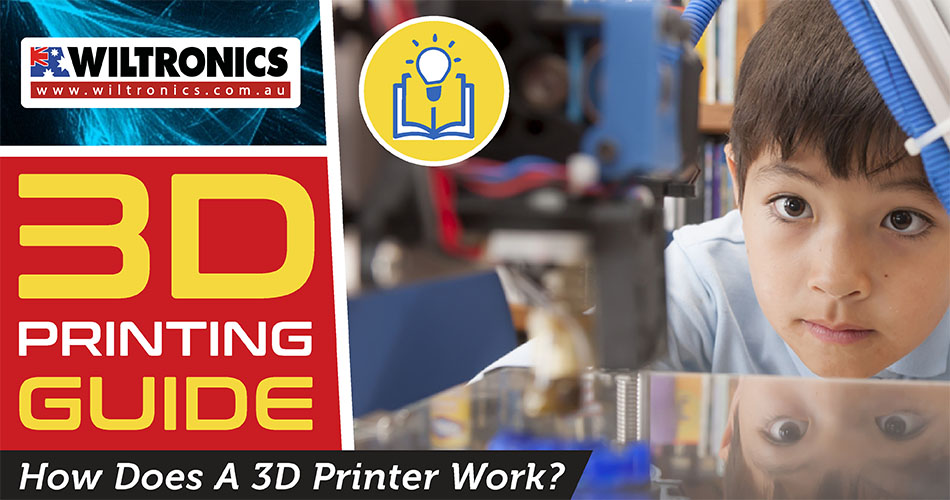
3D printers are revolutionising manufacturing, but how exactly do they work?
Three-dimensional printers have moved well beyond prototyping. These innovative devices work hand-in-hand for better and faster engineering.
With 3D printing, you can give your life to your model, not on paper but on a prototype. How is that even possible?
In this post, we will sift through the behind-the-scenes of printing 3D objects. This also includes the different types of 3D printers on the market.
Introduction to 3D Printers
We are now living in a world with the continuous development of technology. And part of this advancement is 3D printers. The process is, unsurprisingly, called 3D printing.
3D printers have been around for 30 years or more. But previously, they were in the realm of high-tech that only a few had access to. This mainly includes corporations and major movie studios.
It took two more decades to get 3D printers to the average consumer. Now, they are on the map for many manufacturers in various industries.
How Do 3D Printers Work?
3D printers use similar methods to a traditional inkjet printer. But they do not use ink to print and do not print on paper.
Instead, they use powder-like materials and precision tools to create three-dimensional objects. The process starts by making a graphic model of the object.
The model is usually designed using Computer-Aided Design (CAD), software for product design. And the creation of a digital model tends to be the most labour-intensive part of the process.
After the design, the next step is to slice the model digitally to get it ready for printing. Keep in mind that a 3D printer cannot conceptualise a 3D model.
The slicing process breaks down the model into many layers. And the design for each layer is then sent to the printer head to print or for the final stage.
From there, the 3D printer itself takes over. It transforms the digital mock-up into a concrete prototype.
It will begin to print out the model as per the instructions provided by the slicer program. This can depend on the type of printer used, and the final output can vary in shape, size, and colour.
The process of making 3D models can take hours or even days, depending on the size and complexity of the project.
3D Printing Explained
3D printing is a part of a family manufacturing technology called additive manufacturing. The transformation of a digital design into a tangible object – layer by layer.
Additive manufacturing has gone through various names throughout its history. This includes stereolithography and 3D layering, but 3D printing is the best-known.
In a nutshell, 3D printing is a versatile method of production and rapid prototyping. And overall, it is a fascinating procedure that can be used in many fields.
The Process of 3D Printing
The overall printing process is the same regardless of what 3D printer is used. But there are three crucial steps, and these are:
- Sketching
- Slicing
- Printing
Here is a step-by-step guide to using a 3D printer and creating three-dimensional models:
Step 1: Create a 3D digital model using CAD software. Programs used for this include TinkerCAD, Fusion360, and Sketchup.
Step 2: Convert the CAD design to standard tessellation language (STL) format. Note: Most 3D printers use STL files, including ZPR and ObjDF formats.
Step 3: Transfer the STL file to the computer that controls the 3D printer. There, you can choose the size and orientation for printing.
Step 4: Set up the 3D printer. Each machine has its own requirements for set-up. This includes refilling the polymers or binders.
Make sure that you know what type of 3D printer you are using so you’d know the consumables it will use.
Step 5: Start the machine, then wait for the prototype to complete. It’s important to check the machine continuously to ensure there are no errors during the process.
Step 6: Once the tangible object is done, remove it from the machine.
Step 7: The last step is post-processing. Many 3D printers need some post-processing, such as brushing off the remaining powder.
Or it could be washing the 3D output to remove water-soluble supports and then curing.
Different Types of 3D Printing
Each type of 3D printing varies in how they form plastic and metal parts. They also differ in material selection, surface finish, manufacturing size, speed and cost.
- Stereolithography (SLA): A 3D printer that utilises mirrors called galvanometers. It’s a quick prototyping measure and can create 3D models in only a couple of hours.
- Selective Laser Sintering (SLS): Softens nylon-based powders into strong plastic. It utilises 3D printing measures called Power Bed Infusion.
- PolyJet: It produces smooth, accurate parts, prototypes and tooling.
- Fused Deposition Modeling (FDM): Also known as Fused Filament Fabrication (FFF). It utilises a cycle called Material Extrusion.
- Digital Light Process (DLP): It has quicker print times than SLA. Regular applications for SLA and DLP are infusion shape type polymer models and amplifiers.
- Multi Jet Fusion (MJF): It assembles utilitarian parts from nylon powder. MJ printers can fabricate multiple objects in a single line without affecting build speed.
- Desktop 3D printers: Small and compact printers that build objects from raw material. They can fit on the surface of a typical desk, hence the name. They also do not require a large and open space.
Choosing the Right Filament
After choosing what type of 3D printer you plan to use, your next step is to find the right filament for your project. Here are a few of the more popular and important filament types.
1. Acrylonitrile Butadiene Styrene (ABS) and Polylactic Acid (PLA)
These two are known as the dynamic duo. Objects printed from ABS are tough, durable, and nontoxic.
PLA, in contrast, is often used as the base material for more exotic, composite materials.
2. Nylon
A versatile synthetic material. It is strong, durable, flexible, and among the lowest-priced 3D printing filaments.
3. Thermoplastic Elastomer (TPE)
A thermoplastic with high elasticity. Objects printed using this material are flexible.
4. High-impact Polystyrene (HIPS) and Polyvinyl Alcohol (PVA)
HIPS is like ABS, except it is soluble in Limonene, a citrus-based solvent. PVA, meanwhile, dissolves in water. It’s odourless, non-toxic, and biodegradable.
5. Composite filaments
Have a base of PLA or other thermoplastic into which particles, powders, or flakes of other materials have been mixed.
6. Resin-based printing
A newer revolution beyond plastic filament. These printers use light-reactive thermoset materials called resin.
To make 3D printing more convenient, 3D printing accessories are also up for sale.
Get Your 3D Printers Here!
Get 3D printing with our range of 3D printers! Find the perfect 3D printer to suit your needs with a variety of build sizes and resolutions.
1. 3D Printing Pen – No longer available
Product code: JTL4253
This 3D Printing Pen allows you to create stunning 3D artwork. With one, you can “draw” in mid-air and instantly form three-dimensional structures. You can pick up the outcome and hold it in your hand.
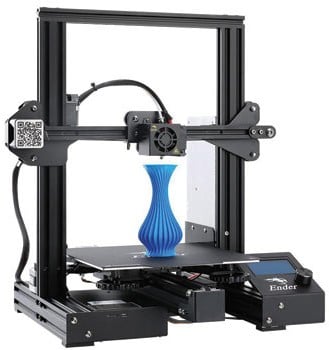
2. Creality Ender-3 Desktop 3D Printer
Product code: DF8600
The Creality Ender-3 has features that make 3D printing easier and more reliable. With an open-source design, it can also be easily customised and upgraded. Perfect for beginners!
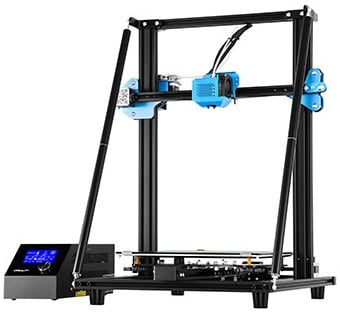
3. Creality CR-10 V2 Desktop 3D Printer
Product code: DF8606
This is the improved version of the famous Creality CR-10. Its ultra-silent TMC2208 motherboard will give you an almost noise-free printing environment.
The CR V2 unit guarantees to add incredible versatility to your workbench. The triangular structure also ensures a solid, dimensionally stable work platform.
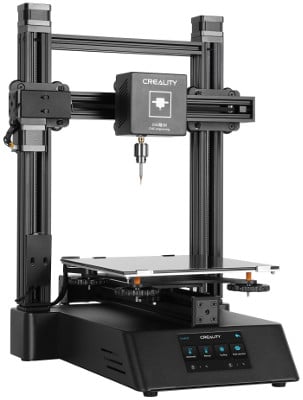
4. Creality CP-01 3-in-1 Desktop Laser Engraver / CNC / 3D Printer
Product code: DF8604
A 3-in-1 machine that consists of a 3D printer, laser engraving machine, and CNC cutting machine. The printer itself is compatible with a variety of materials, including PLA, ABS, and TPU.
As for laser engraving, it engraves with high precision. It allows you to imprint on materials such as wood, paper, plastic, and leather.
The CNC cutting machine mode can generate models with a high degree of smooth finishing. This lets you cut PCB without any deviations.
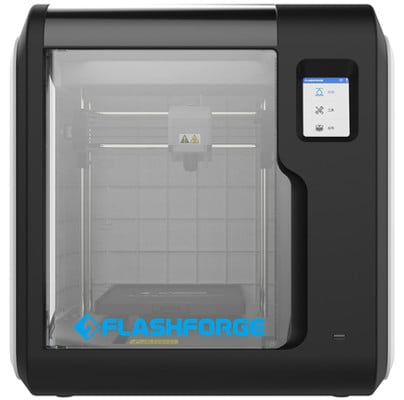
5. Flashforge Adventurer 3 3D Printer with Print Cloud Management – No longer available
Product code: DF4256
This compact and powerful 3D printer is perfect for commercial and home projects. It has a detachable nozzle, built-in camera, removable print bed and cloud print management.
Even better, it can facilitate more advanced prints! Perfect for both beginners and professionals alike.
6. Creality Dual Filament 3D Printer CR-X – No longer available
Product code: DF4410
The Dual Filament 3D Printer CR-X is the first dual extruder 3D printer from Creality. It features a new print head design that channels two filament feeds through a single nozzle.
Other features include:
- 300 x 300 x 400mm print area
- 4-inch colour LCD touchscreen
- Over-sized bed screws for levelling the print bed
- Carboloy silicon printing platform
- Dual cooling fans
- SD memory card slot
- Heavy-duty power 24VDC supply
7. Snapmaker 3-in-1 3D Printer – No longer available
Product code: DF4400
This 3-in-1 printer has three interchangeable modules: 3D printing, CNC carving, and engraving. The 3.5″ touchscreen gives you added control of your printer.
The all-metal frame allows high-quality prints. The unit also comes with an integrated modular design and connectors.
8. Flashforge Inventor Dual Filament 3D Printer – No longer available
Product code: DF4230
The Inventor is a totally-enclosed design, so it is safe to use indoors and around children. It features a 50-micron print resolution for high-quality printing.
Cooling fans are also equipped with sensors that regulate the build chamber temperature. In case of a power outage, the resume print setting will get back to printing once power has been restored.
Thanks to the built-in camera, you can monitor the progress of your prints remotely.
The Bottom Line
Printing out 3D objects straight from a printer is now possible in this digital age. All thanks to the invention of 3D printers and the works of 3D printing.
If you can design a model in 3D software, you can turn it into a reality. Both have proven to be world-changing technologies.
This article was originally published in June 2021 and has been updated.
© Electrotech Brands Pty Ltd 2022


Write a Comment
You must be logged in to post a comment.